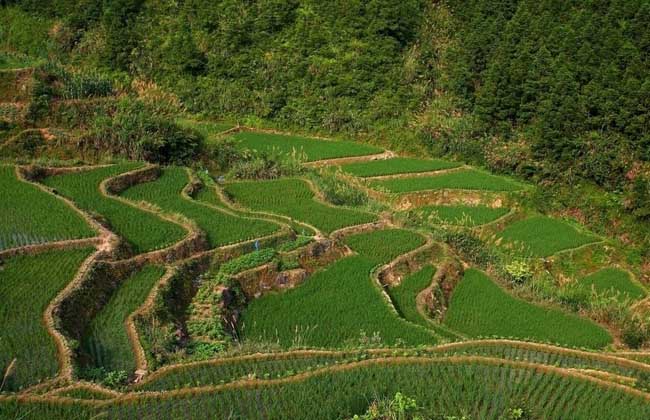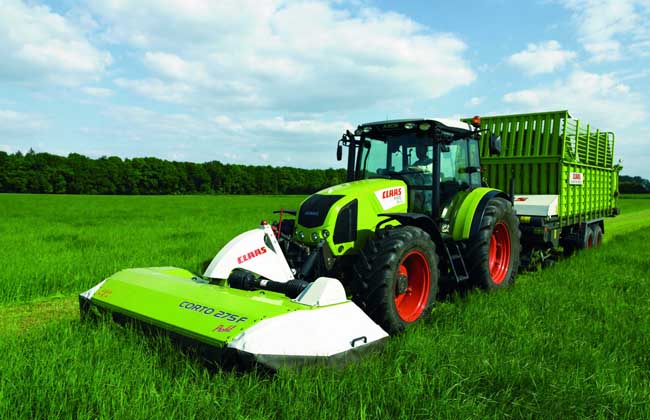Five Models of Creative Agriculture Abroad
Abstract: creative agriculture originated in the late 1990s. Due to the innovative development of agricultural technology and the expansion of agricultural functions, sightseeing agriculture, leisure agriculture, refined agriculture and ecological agriculture have developed one after another. at the same time, the concept of creative industry has also been formed in Britain, Australia and other countries and regions and rapidly expanded around the world. Now let's take a look at the five models of creative agriculture abroad.

Creative agriculture originated in the late 1990s. Due to the innovative development of agricultural technology and the expansion of agricultural functions, sightseeing agriculture, leisure agriculture, refined agriculture and ecological agriculture have developed one after another. at the same time, the concept of creative industry has also been formed in Britain, Australia and other countries and regions and rapidly expanded around the world. let's take a look at the five models of creative agriculture abroad.
Dutch model: high-tech foreign exchange-earning type
The Netherlands is a world-famous lowland country. 1/4 of the country's land is below sea level, and the per capita arable land is only more than one mu. The relatively poor agricultural conditions have prompted the Netherlands to continue to innovate in agriculture, thus embarking on the road of creative agriculture, and has become the world's leading agricultural country, ranking third in the world after the United States and France.
The scientific and technological content of creative agriculture in the Netherlands leads the world. On the basis of developed facility agriculture and precision agriculture, it intensively produces greenhouse crops and horticultural crops with high added value, and has a complete creative agricultural production system. The Dutch flower industry is famous all over the world, and the fundamental reason is that the scientific research and development of the flower industry is very outstanding. The development strategy of the flower industry is technology-centered, emphasizing moderate scale operation, highly intensive management, developing high-tech products and occupying the commanding heights of technology.
The economic function of Dutch creative agriculture in earning foreign exchange is outstanding. The per unit yield of many agricultural products in the Netherlands is among the highest in the world, and the export volume of tomatoes, potatoes and dried onions ranks first in the world. The Netherlands is the world's largest mushroom producer, dairy exporter, egg exporter and flower producer. 67% of the world's flower import and export trade comes from the Netherlands. Since the 1990s, the annual net export value of agricultural products in the Netherlands has been maintained at more than 13 billion US dollars, accounting for about 10% of the world agricultural trade market share. The Netherlands ranks first in the world in terms of foreign exchange earnings from agricultural exports per capita.
British model: tourism environment-friendly
Britain is a pioneer in the development of agricultural tourism in the world. On the one hand, the highly developed urbanization provides a huge target market for agricultural tourism. As the country with the earliest start of industrialization in the world, the urban population of Britain accounted for more than 80% of the country's population in the 1970s. Because the urban population is far away from nature for a long time, it has a common psychological need to go into the countryside, get close to nature, relieve psychological pressure and participate in outdoor activities, especially because the children in the city are very strange to the countryside and agriculture. more eager to experience pastoral life. On the other hand, the rapid and sustained economic growth has also given birth to agricultural tourism. Many factors, such as the substantial increase in people's disposable income, leisure time, private car ownership, the improvement of consumer demand and many other factors, make British agricultural tourism emerge as the times require and develop rapidly.
In 1992, there were 186 farm attractions, 81 vineyards and 209 country parks, accounting for 1/10 of all man-made attractions in the UK. At present, nearly 1/4 of the farms in the UK carry out agricultural tourism directly. Most of the operators of agricultural tourism are farmers. Each farm scenic spot provides tourists with the opportunity to participate in rural production and life and experience the farm scenery and atmosphere. The farm generally has an agricultural exhibition hall with tour guides and commentary to introduce agricultural work and provide farm-specific handicrafts to provide catering and accommodation services. Most scenic spots have children's entertainment.
Although the income of agricultural tourism may be greater than that of agricultural production, the dominant position of agricultural production has not been weakened, and agricultural tourism has always been an aspect of the diversification of farm management. Starting from the operating scale, operating efficiency and market demand characteristics of the farm, all scenic spots adhere to the orientation of miniaturized operation and the management mode of privatization. As more than 90% of agricultural tourists are local residents, various scenic spots generally use the localization market strategy to expand the market in order to maximize profits. Most importantly, British agricultural tourism is closely combined with cultural tourism, making visitors appreciate the national culture accumulated over thousands of years of history in the picturesque pastoral scenery.
British farms also protect the farm environment and the rural ecological environment through tourism development. As of 2009, about 25000 farmers in the UK have participated in agricultural environmental programmes to protect the rural landscape, planted 40, 000 km of shrub fences and managed 230000 agricultural reservoirs, greatly enriching agricultural tourism resources. Abstract: creative agriculture originated in the late 1990s. Due to the innovative development of agricultural technology and the expansion of agricultural functions, sightseeing agriculture, leisure agriculture, refined agriculture and ecological agriculture have developed one after another. at the same time, the concept of creative industry has also been formed in Britain, Australia and other countries and regions and rapidly expanded around the world. Now let's take a look at the five models of creative agriculture abroad.
German model: social life function type
Since the 1990s, the German government has vigorously developed creative agriculture while advocating environmental protection. The main forms are citizen farms and leisure farms.
The citizen farm uses the agricultural land in the city or the neighboring area to be rented out to the public in small plots. The lessee can plant flowers, grasses, vegetables, fruit trees and so on on the farmland or engage in family agronomy. Through personal farming, citizens can enjoy the pleasure of returning to nature and pastoral life. Mineral fertilizers and chemical protectants are absolutely prohibited during planting.
Leisure farms are mainly built in forest or grassland areas. The forest here not only plays the environmental protection function of storing water, preventing wind, purifying the air and preventing soil erosion, but also plays the function of science popularization and environmental protection education. Schools and kindergartens often bring children here, adults also come to participate in forest leisure tourism, under the leadership of forest rangers to get in touch with the forest, get to know the forest and learn about the forest. Some enterprises have also moved teamwork training, creative training and other projects from the company's closed conference room to the open forest, resulting in unexpected training results. The suburb of Munich has become a desirable place for rest and recuperation because of its unique "equestrian therapy program" and its "green belt project" series of action plans.
French model: environmental protection and ecological type
France is the second largest exporter of agricultural products in the world after the United States, and its agricultural output and output value rank first in Europe. In France, from national leaders to ordinary people, there is a natural sense of closeness to agriculture. French creative agriculture is a kind of creative agriculture based on environmental protection and ecological function, which is mainly based on field crops, adopts large-scale specialized farm production, and gradually reduces small farms.
Paris region of France is a highly urbanized area, but it still has a very developed agriculture. It is the third largest corn producing area in France and the main producing area of fruits, vegetables and flowers. However, the function of creative agriculture in Paris on urban food supply is not obvious. All kinds of food supply in Paris, mainly through the highway network extending in all directions, is completed by all parts of the country and even other European countries. Therefore, creative agriculture in Paris breaks through self-sufficient production, and highlights the ecological function of agriculture, using agriculture to separate polluted areas such as highways and factories from residents to create a quiet and clean living environment. Use agriculture as an urban landscape, or grow fresh fruits, vegetables, flowers and other products that residents need, some as places for citizens' sports and leisure, and some as educational bases for young people. Visitors can not only visit the French vineyards and winemaking workshops, but also take part in the agricultural experience, participate in the whole wine-making process, make wine themselves and take the wine away, and enjoy a different pleasure.
Japanese model: multi-functional and rich
In view of the dilemma faced by the development of Japanese agriculture before, the honorary professor and agricultural expert of the University of Tokyo in Japan, Ryoko Nai Muramura, first put forward the concept of "sixth industry" as early as the 1990s, pointing out that through the mutual integration of the three industries, we can enhance the added value of agricultural products and change the prospects of agricultural development. The "sixth industry" is a new type of agriculture that Japan is trying to promote at present. The birth of the "sixth industry" makes people discover the possibility of creative agriculture, and strengthens the driving force of local economic development by stimulating agricultural vitality. Therefore, more and more enterprises, funds and talents in Japan have begun to enter the increasingly active "sixth industry".
Japanese creative agriculture is characterized by "multi-function to become rich", and vigorously develops the ecological, experience, leisure and other functions of agriculture. The "one village, one product" movement in Oita Prefecture, Japan is the forerunner of creative agriculture. According to local conditions, the county has turned some of its own unique things (which can be a kind of agricultural products, a culture or a ballad) into famous brands in Japan and even in the world.
The development of creative agriculture in Japan focuses on facility agriculture, processing agriculture, sightseeing and leisure agriculture, and diversified agriculture, which belongs to creative agriculture with comprehensive functions, focusing on developing the green, environmental protection, experience, leisure and demonstration functions of agriculture. the construction is characterized by high-tech industry and mosaic multi-functional "Green Island Agriculture". Japan's creative agriculture is mainly concentrated in three major metropolitan areas, namely, Tokyo Circle, Osaka Circle and Zhongjing Circle, focusing on the production of vegetables, fruits, multi-crops and multi-varieties, mainly providing high-quality agricultural products for the public and meeting the needs of a green environment.
Related
- A course of planting techniques and methods on how to grow carrots
- How to plant the latest tulips?
- Is it better to pick tea in the morning or in the afternoon? When is the best time for tea to be picked? what is the third or fifth tea?
- Launch Yuanxiao Happy combination Haocha + Tea Yuan healthy Taste
- Penghu Tourism "Fireworks 20 Parade with You"
- 2022 West Lake Happiness holds "Digital Revitalization Voucher" and draws iphone13 and laptop.
- Banqiao Fuzhou social houses are designed to change start-up combined with police elimination to create a safe and livable environment
- The convenient measure of "mechanical weeding" in Xinbei has been abused and the Agriculture Bureau has imposed heavy penalties on the illegal land consolidation.
- Changgeng University Joins Hands with Four Memory Factories to Rescue Memory Talent Shortage
- The list of Taiwan's top 100 MVP managers is listed by the Director-General of the Farmers' Association of Sanxia District.



